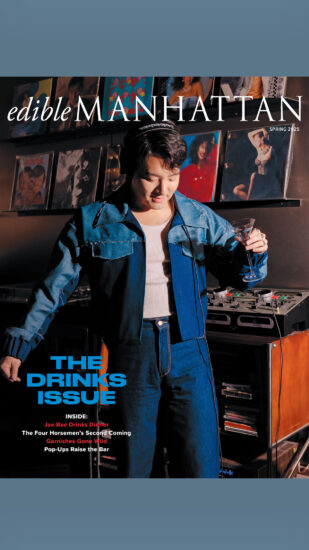
Last week I saw the future of sustainable seafood. It involves plankton, lots of it. The occasion was a lunch at Blue Hill in Greenwich Village celebrating a fish farm in Southern Spain called Veta La Palma, where shrimp, sea bass, mullet and a lesser known fish call meagre are cultivated and harvested in an algae- and plankton-rich reclaimed marshland.
The event was hosted by Blue Hill Chef Dan Barber, who emerged as an articulate and high-profile champion of Veta la Palma back in February 2010 when he touted its virtues at a TED conference. Yesterday, Barber aimed his message directly at the palates of a small group of industry professionals and journalists. The secret to the fish farm’s success, he explained, is how it reversed a series of drainage channels that a cattle ranch that had previously used the property had installed. Instead of draining the life from fertile marshlands as the old owners had done, the farm’s new cultivators brought water from the nearby micronutrient-rich Guadalquivir River back into the parched land, establishing a self-sustaining ecosystem that supports huge flocks of predators as well as the seafood the birds feast on.

Spanish chef and Veta collaborator Angel Leon was cook for the day, describing the plankton that helps sustain the fish farm’s ecosystem as “the origin of life, like the blood of the sea.” They too are edible, and were included in the meal he prepared.
For the first course, Angel introduced a selection of seafood “charcuterie” he developed to mimic traditional Spanish cured meats. Although he labored long to create these fish sausages, it wasn’t until he discovered the exceptionally high-fat grey mullet of Veta la Palma that he was able recreate the fatty texture of chorizo, salchichon and other Spanish chacuterie. Small oysters, unremarkable in themselves, gained character from the umami bombs of salty raw plankton that dotted them. Plankton in cooked form starred in the next dish, a deep, sea-green and white risotto that was deliciously rich and satisfying despite being completely free of butter or cream. The final stunner was a pristine fillet of steamed sea bass over a bed of creamy white plankton, fish roe and still-crunchy green peas.
Esca chef Dave Pasternack was among the converts at the lunch, exclaiming, “plankton’s awesome!” He plans to use it with spaghetti, either added into the pasta dough or incorporated into a sauce as he would sea urchin or tobiko. Just back from an eye-opening eating trip in Peru, Pasternack reported that he ate algae in a delicious ceviche.
The message of the day was that other countries are ahead of us and have a lot to teach us about adopting a diet and aquaculture practices that, as Barber has said, create a world where “farms restore instead of deplete” and allow “every community to feed itself.”




